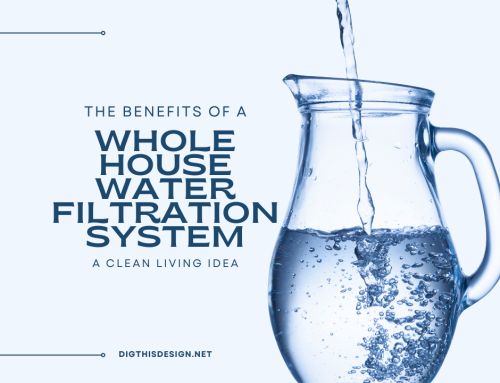Have you ever wondered where old storage units go when they’re no longer in use? Or how much energy it takes to light up and secure all those units across town? As we tread deeper into the 21st century, sustainability isn’t just a buzzword anymore—it’s a necessity. The word of sustainable self-storage is catching on. Just picture this: units built from recycled or upcycled materials, solar panels on rooftops, and surrounding gardens that are both pretty and practical. It’s not science fiction; it’s the new reality. And for those wondering, “Why mix self-storage with sustainability?” Well, like peanut butter and jelly or summer and ice cream, some things just make sense when put together.
As we journey through this topic, you’ll discover that sustainable self-storage isn’t just good for Mother Earth; it’s a savvy business and a win-win for everyone involved.
Reasons Sustainable Self-Storage Units Make Sense

Rise of Eco-Conscious Storage Choices
Imagine walking into a forest, the crunch of leaves beneath your feet, and the sound of birdsong in your ears. Now, imagine a storage unit seamlessly blended into that environment, with minimal carbon footprint and maximum utility. That’s where places like Hide Away storage units have positioned themselves in the market. Amidst the chirping crickets, they stand as a beacon for those who desire to store their belongings but also care deeply about the planet.
These aren’t just lifeless metal boxes. They’re thoughtfully designed spaces, utilizing materials and methods that show respect to Mother Earth. Sustainability in storage is about understanding that every choice has an impact. It’s the dappled sunlight through the trees, a gentle reminder that even in our quest to find space for our stuff, we can make decisions that benefit the world around us. After all, our possessions are temporary, but the legacy we leave behind lasts forever.
Sustainable Materials and Design Choices
Nature offers us a plethora of beautiful materials and design inspirations. When it comes to sustainable storage facilities, the use of eco-friendly materials and designs can make a significant difference in reducing environmental impact. This focus on sustainability doesn’t only protect the environment, but it also creates a space that feels more natural and harmonious.
According to the U.S. Green Building Council, incorporating sustainable elements in building designs can lead to energy savings and a lower carbon footprint.
Here are some popular sustainable choices in the world of storage units:
- Recycled Steel: This is often used for the main frame, reducing waste and the need for new resources.
- Green Roofs: Plant-covered roofs that act as insulators, reducing energy needs.
- Solar Panels: Harnessing the sun’s energy to power facilities.
- Natural Lighting: Large windows and skylights to minimize artificial light use.
- Rainwater Harvesting Systems: Collecting and using rainwater for landscaping and other needs.
By intertwining these components, storage facilities can be transformed into eco-friendly havens. As customers, our preference for such choices can be a powerful way to promote and support sustainable practices in the industry. It’s a beautiful blend of function and care for our planet.
Energy Efficiency in Modern Storage
Think of a place where you can store your precious belongings, and at the same time, this place respects our dear Mother Earth. That’s the beauty of modern, energy-efficient storage facilities. These places aren’t just boxes with locks; they’re smartly designed environments that consume less and give back more.
Today, many storage facilities are turning the page and rewriting their energy story. Instead of being power guzzlers with rows of bright, energy-draining lights, they’re embracing subtler, efficient LED lighting that senses when someone’s around. The walls, often insulated with eco-friendly materials, ensure that the units remain temperate without overworking the HVAC system. And speaking of temperature control, advanced thermostats, which adjust based on real-time needs, have become a staple.
It’s heartwarming to see that the simple act of storing our memories and belongings can now be intertwined with caring for the planet. It’s like giving a gentle nod of appreciation to nature every time you unlock your storage unit door. In this evolving age, making a green choice is, thankfully, becoming the easier choice.
The Green Materials Behind Sustainable Self-Storage
While most people might only consider the size and location of a storage unit, the materials used in its construction play a pivotal role in its sustainability. It’s not just about space; it’s about how that space impacts the environment. Thankfully, storage facilities are increasingly considering this aspect and are making efforts to employ sustainable materials in their construction.
- Recycled Steel: Many modern storage units are constructed using recycled steel, reducing the need for new raw materials and the environmental impact associated with mining.
- Green Roofing: Some storage facilities have adopted green roofs, which are covered with vegetation. This not only acts as insulation but also supports local ecosystems.
- Low-VOC Paints: These are paints that emit fewer volatile organic compounds, ensuring better air quality around storage areas.
The Environmental Protection Agency has been a consistent advocate for such sustainable practices, emphasizing their importance not just for businesses but for consumers and the environment at large. When choosing a storage unit, understanding the materials that went into its making can be just as crucial as knowing its size. It’s a small step we can take for a bigger cause.
Sustainability Meets Aesthetics
In the realm of self-storage, sustainability is not just about being eco-friendly; it’s also about creating structures that harmoniously blend with the surroundings. The beauty of sustainable design lies in its ability to adapt and resonate with nature, while still serving its primary purpose. Just like a leaf blends seamlessly with a tree, sustainable storage units can become an integral part of the landscape.
This is where the world of architecture is showing its magic. Contemporary design thinking doesn’t just stop at functionality but ventures into creating spaces that evoke emotions and reflect the ethos of sustainable living. Imagine walking into a storage unit surrounded by green walls, breathing in the fresh air, and being greeted by the warmth of sustainable wood. It’s a poetic blend of form and function, where every brick and bolt tells a story of commitment to the planet and its future. Sustainability, in essence, is beautiful.
The Green Road Ahead
The journey towards sustainable self-storage has only just begun. As we strive for a cleaner, greener planet, every step counts. By embracing eco-friendly designs and practices in the storage sector, we’re not only preserving resources but also paving the way for future innovations. The blend of sustainability with functionality offers a glimpse of what a harmonious future can look like, where mankind and nature coexist seamlessly.
Other posts you might enjoy:
3 DIY Sustainability Weekend Projects for Your Home
The Advantages of Living in a Tiny Home: Small Log Cabins in Ontario





